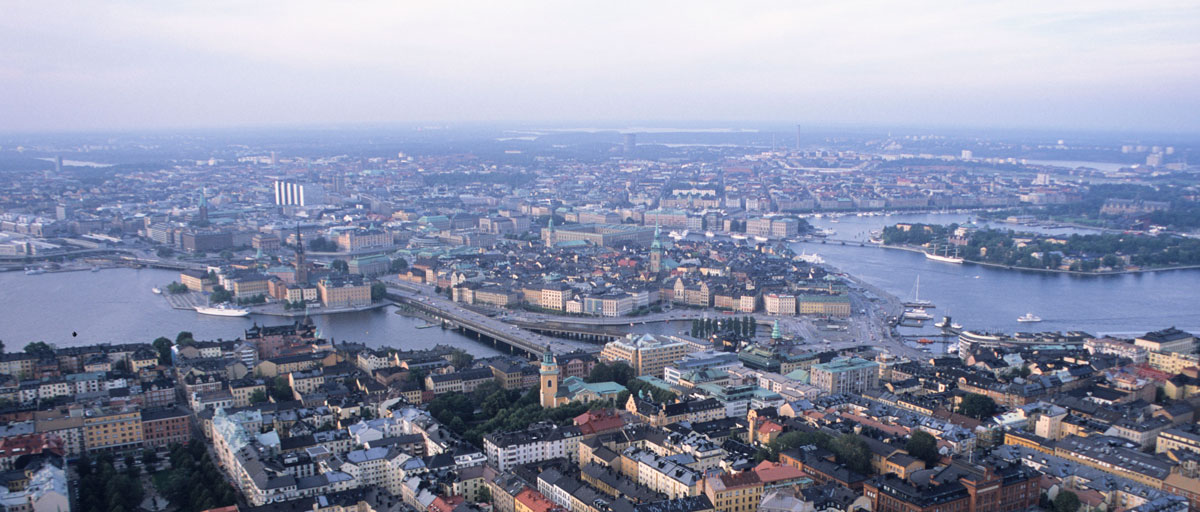
A recent study has looked at how ecosystem services have been included in strategic spatial plans for Stockholm and Melbourne since 1929. The study found that the services have appeared and disappeared over the course of the years. Photo: S. Zeff/Azote
City planning
Peekaboo
Ecosystem services have historically appeared and disappeared in strategic spatial plans for Melbourne and Stockholm
- Study looks at the role ecosystem services have played in strategic spatial plans from Stockholm and Melbourne
- Over time, the number of ecosystem services mentioned in the plans have increased in both cities
- Strategic spatial plans generally demonstrate awareness that urban populations are dependent on ecosystems
A recent study published in Ecology and Society, has taken a historic look at the role ecosystem services have played in strategic spatial plans from Stockholm and Melbourne.
"We looked at the plans, going back to 1929 and scanned them for mentioning of different ecosystem services. In total we went through eight plans for each city," says Cathy Wilkinson, a researcher at the Stockholm Resilience Centre and lead author of the study.
Similarities and differences
The team, consisting of researchers from the Stockholm Resilience Centre, the Beijer Institute and Luleå University of Technology, used a content analysis approach and developed an ecosystem services coding protocol that identified and categorised 39 different ecosystem services (ES).
In addition to investigating what ecosystem services were mentioned they also looked at how human-nature relations and discussions about the valuation and trade-off regarding these services were framed.
Comparing the two cities revealed some interesting similarities and differences.
Of the 39 categorised services, only freshwater and recreation were mentioned in every plan for both cities. About a third of the ecosystem services where never mentioned in a plan from either city.
Looking up
Over time though, the number of ecosystem services mentioned in the plans have increased in both cities — however, they do not mention the same services, not when comparing the cities, and not from year to year.
"Although the cities' plans mentioned different ecosystem services, there is a striking pattern in the total number of services mentioned — spiking in the 60's-70's and then declining again in the 70's-80's, and then rising again with the highest number of ecoststem services mentioned in the most recent plans" says Garry Peterson, a researcher at Stockholm Resilience Centre and co-author of the study.
Why bother?
The authors conclude that the Ecosystem Services framework is useful in looking at how ecosystem service related matters are addressed in strategic spatial planning policy. It importantly reveals which ecosystem services are left out of the policies.
The analysis also shows that strategic spatial plans generally demonstrate awareness that urban populations are dependent on ecosystems. This framing of ecosystem services is an important part of the policy discourse.
None of the plans placed monetary values on the services, however land-use conflicts that required trade-offs between ecosystem services and the fair distribution of them was a central feature of the plans.
"This framework can contribute to improving the quality of strategic plans by increasing the understanding of how ecological dynamics and human action can shape the dynamics and interactions of multiple ecosystem services. It can also improve the ability of cities to learn from each other and from non-urban work on ecosystem services" Cathy Wilkinson concludes.
Citation
Wilkinson, C., T. Saarne, G. D. Peterson, and J. Colding 2013. Strategic spatial planning and the ecosystem services concept — an historical exploration. Ecology and Society 18(1): 37 http://dx.doi.org/10.5751/ES-05368-180137
Visiting address: Albanovägen 28. Disability entrance: Albanovägen 18
Deliveries: Roslagsvägen 28
Postal address (courier packages):
Stockholms Universitet
Stockholm Resilience Center
[Recipient]
Frescativägen 8
114 18 Stockholm
Sweden
Postal address (letters):
Stockholms Universitet
Stockholm Resilience Center
[Recipient]
Frescativägen 8
SE-106 91 Stockholm
Sweden
Phone: +46 8 674 70 70
Organisation number: 202100-3062
VAT No: SE202100306201






